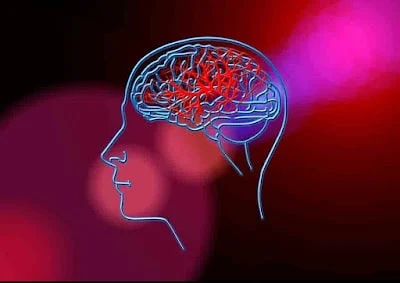It has
long been a controversial theory about Alzheimer’s disease, often dismissed by experts as a sketchy cul-de-sac off the beaten path from mainstream research.
Virus 'identity change' may play a task in Alzheimer's?
According
to recent research in vitro and in mice, viruses that inherit contact with
biological fluids acquire a protein coating that renders them more infectious.
Moreover,
it seems that some viruses that ‘change identity’ in this way may promote
neurodegenerative conditions, like Alzheimer’s.
Viruses
are strange, fascinating agents, not least because scientists still find it
difficult to mention whether or not they qualify as living organisms or not.
To
replicate, viruses need to infect a number — so during a live biological
environment, viruses are also
“alive,” interacting with the cells of the host they infect and multiplying.
At an
equivalent time, on their own, outside an infected host, viruses are more
“dead” than “alive,” since they're a protein “package,” containing specific
genetic material.
Though
not clearly “dead” or “alive,” viruses can exploit certain biological
mechanisms to preserve their integrity and are more likely to duplicate.
In a new study that used both human biological samples and mice, researchers from
Stockholm University and Karolinska Institutet in Solna, Sweden, are watching
one such phenomenon that permits viruses to become more infectious, namely, the
formation of a
“protein corona.”
Viruses grow more infectious and dangerous?
In their
study paper — which appears in Nature Communications — the authors explain that “[t]he
terms ‘protein corona’ refers to the layer of proteins that adhere to the
surfaces of nanostructures once they encounter biological fluids.”
Similarly
to nanoparticles, when viruses inherit contact with biological fluids, such as blood or
lung fluid, they “pick up” proteins, forming a “coating” that protects them
and, thus, helps
they become more harmful.
“Imagine
a ball falling into a bowl of milk and cereals,” says study author Karim Ezzat.
“The ball
is instantly covered by the sticky particles within the mix, and that they
remain on the ball once you take it out of the bowl.”
“The same
thing happens when an epidemic gets in touch with blood or lung fluids that contain thousands
of proteins,” Ezzat explains.
“Many of those proteins immediately stick with
the viral surface,
forming a so-called protein corona.”
To begin
with, the researchers checked out how acquiring a protein corona influenced the respiratory
syncytial virus (RSV), a standard virus that causes acute respiratory
infections, especially
in children.
Ezzat
notes that his and his colleagues’ analysis revealed that “[t]he protein corona
signature of RSV within the blood is extremely different from that in the lung
fluids.”
“It is
additionally different between humans and other species, like rhesus macaque
monkeys, which can
also, be infected with RSV,” he adds.
“The virus remains unchanged on the genetic level.
It just
acquires different identities by accumulating different protein coronae on its
surface, counting on its environment.
This
makes it possible for the virus to use extracellular host factors for its
benefit, and we’ve shown that a lot of those different coronae make RSV more
infectious,” Ezzat elaborates.
Going
further, the researchers saw that infecting mice with RSV or the herpes simplex
virus type 1
(HSV-1) had another effect — the viruses could bind to amyloid proteins, the
sort of proteins
that form toxic plaques within the brains of individuals with Alzheimer’s and
other sorts of dementia.
More
specifically, HSV-1 can bind to soluble amyloid proteins and facilitate their development into “threads” which will then form tangles and plaques.
And when
the researchers infected the brains of mouse models “primed” for Alzheimer’s disease
with HSV-1, they found that the mice developed the neurodegenerative condition within 48
hours of exposure.
Without
HSV-1, the investigators explain, the experimental mice would typically take
months to
develop Alzheimer’s disease.
However,
consistent with the authors of this study, the present findings could actually
help scientists
come up with better vaccines to counter such potent viruses, also as offer further
insight into the factors that influence the event of neurodegenerative conditions.
“The
novel mechanisms described in our paper can have an impression not only on
understanding new factors determining how infectious an epidemic is but also on
devising new ways to
style vaccines” says Ezzat.

0 comments:
Post a Comment